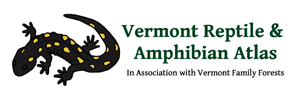Over the years, the resources offered in the online Atlas have grown. From a glossary to reading lists to ways to get involved, we hope you will find these additional pages useful.
Updates
Jim Andrews sends out Herp Update emails to people on his mailing list. These are generally collected here in blog format. You can subscribe to the mailing list to receive these updates in a more timely fashion here. See upcoming public events at this page.
Get Involved
Conservation & Rescue
- Practice Conservation: How you can help reptiles and amphibians
- Amphibian Crossings: When a road separates wetlands and uplands…
- Vermont’s Herps Are Not Pets
- What to do if you find a sick or injured animal
- Moving to a Sustainable Economic System:
- Limits to Economic Growth
- Recommended Reading List for Ecological Economics
- Population Growth & Resource Consumption page and the Optimum Sustainable Population (PDF)
Jim Andrews contributed the “Biodiversity” chapter in What is an Optimum / Sustainable Population for Vermont?, a report published in 2013 by Vermonters for a Sustainable Population.
Reading & Resources
- Glossary
- Bibliography
- Additional Reading
- Useful References, Books, and Websites
- Road Mortality Bibliography & Links
- Management Resources covering how to manage your land to benefit reptiles and amphibians, state and regional guidelines that include forestry and mowing recommendations, as well as more detailed resources related to ponds and wetlands, vernal pools, snakes, and turtles

